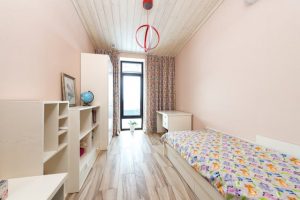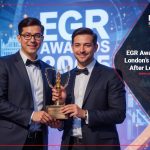In a small bedroom, every square centimetre counts, making the positioning of a single bed crucial for both maximising usable space and ensuring comfort.
A carefully chosen bed can transform the room, creating an illusion of spaciousness while providing essential functionality. By employing thoughtful strategies and optimising furniture placement, one can greatly enhance the living area.
For example, a compact single bed with storage offers the dual benefits of a comfortable sleeping space and convenient built-in storage, eliminating the need for additional bulky furniture.
Furthermore, implementing small bedroom ideas like multifunctional furniture and appropriate bed size can make the difference between a cramped space and a cosy retreat. The way a bed is positioned in relation to other elements such as windows, doors, and walls can impact both the flow and aesthetics of the room.
As the largest piece of furniture, the bed provides the anchor around which other design elements revolve, influencing the overall ambience and functionality of the small bedroom.
Key Takeaways
- Positioning is key in small bedrooms to balance space and comfort.
- Selecting multifunctional furniture enhances room utility.
- Bed placement impacts bedroom flow and aesthetics.
Maximising Spatial Efficiency

In a small room, the correct bed choice and placement are fundamental to enhancing both comfort and space. Tactical positioning and use of vertical dimensions can transform a cramped space into a functional, relaxing environment.
Choosing the Right Bed
When it comes to beds for small rooms, daybeds and sofa beds offer both sleeping space and seating options, making them a versatile modern bedroom furniture choice. A loft bed elevates the sleeping area, freeing up valuable floor space beneath for a study area or storage. For children’s rooms or occasional use, sleeper sofas are another space-efficient option, turning from a sofa into a bed only when needed.
Strategic Bed Placement
For the most effective small bedroom layout ideas, position the bed in a corner to open the remaining floor space. This layout allows for more freedom to move around and adds a sense of openness to the room. Alternatively, placing a tall headboard against a wall painted with vertical stripes can draw the eye upward, creating the illusion of height and adding depth to the room.
Utilising Vertical and Under-Bed Space
Maximising available vertical space is key in small bedrooms. Floating shelves can serve as nightstands or bookshelves without consuming floor area. Make use of the space beneath a bed by integrating under-bed storage with drawers or bins for clothes, shoes, or seasonal items. This helps keep the room tidy and uncluttered, contributing significantly to the sense of space.
Design Ele ments for Style and Space
ments for Style and Space
When positioning a single bed in a small room, the integration of strategic design elements can greatly enhance both the aesthetic appeal and the functional use of space. By carefully selecting colours, lighting, and storage solutions, one can craft a room that feels more spacious and comfortable.
Lighting and Colour Choices
Choosing the right lighting and colour palette can transform the perception of space in a small bedroom. Wall-mounted lights or hanging pendant lights avoid taking up precious surface space while providing ample illumination. Employing a light grey or other pale tones for walls can make the room appear more open, while mirrors strategically placed to reflect natural light can amplify the sense of spaciousness. To add depth and contrast, small pops of a dark colour through accessories can provide visual interest without overwhelming the space.
Smart Storage Solutions
In small bedrooms where floor space is at a premium, smart storage solutions become pivotal. Here are a few storage ideas to consider:
- Wall-mounted shelves or cubbies: Utilise vertical space for storage without encroaching on the room’s footprint.
- Beds with built-in storage: Drawers under the bed can house clothing or bedding, keeping clutter out of sight.
- Over-the-door organisers: These can hold shoes, accessories, or small essentials, freeing up closet and floor space.
By embracing minimalism and incorporating multipurpose furniture pieces, one can create a fluid and organised environment.
Aesthetic and Functional Accessories
To maintain both style and functionality, carefully selected accessories can serve dual purposes in a small bedroom:
- Curtains: Use light and airy fabrics to allow maximum natural light while maintaining privacy, also adding texture and colour.
- Bedside lighting: A small, chic lamp can provide both a decorative element as well as focused light for reading.
- Throw cushions with storage: Keep the bed looking stylish with cushions that can also store pyjamas or seasonal items.
Each accessory chosen for a small bedroom should contribute both to the overall interior design and to the effective use of space.
Conclusion
Maximising space in a small room like a basement conversion for example requires thoughtful positioning of a single bed. Placing the bed in a corner not only frees up valuable floor space but also provides an opportunity for additional storage solutions underneath or above. By selecting the right furniture and reducing clutter, one can create a functional and comfortable sleeping area. Strategic bed placement coupled with clever design choices are key to achieving a spacious feeling in compact bedrooms.
Author Profile

- Blogger by Passion | Contributor to many Business Blogs in the United Kingdom | Fascinated to Write Blogs in Business & Startup Niches
Latest entries
 BusinessApril 11, 2025How Hiring a Student Could Be the Best Move Your Business Makes
BusinessApril 11, 2025How Hiring a Student Could Be the Best Move Your Business Makes Living in LondonApril 9, 20255 Key Considerations for Long-Term Urban Rentals
Living in LondonApril 9, 20255 Key Considerations for Long-Term Urban Rentals EntertainmentApril 3, 20257 Slot Games that are Popular with Londoners
EntertainmentApril 3, 20257 Slot Games that are Popular with Londoners EventsMarch 25, 2025EGR Awards 2025: London’s Comeback After Losing ICE
EventsMarch 25, 2025EGR Awards 2025: London’s Comeback After Losing ICE




